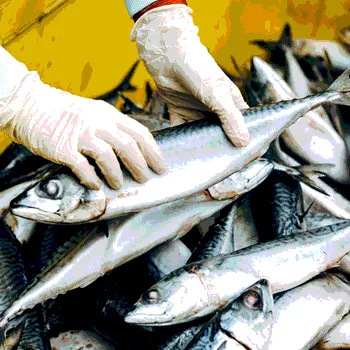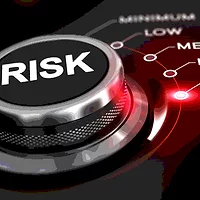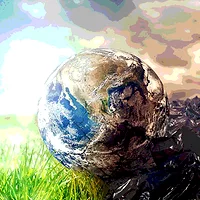An Example of Seafood Safety Capacity Building in Developing Countries

In developing countries, including Egypt, the demand for fish has significantly increased in the past several years. In 2014, Egypt’s per capita consumption of fish was about 23 kg compared to 13 kg in 2002. Fish is an important source of animal protein; it provides nutrients to more than 2.6 billion people in developing countries. Fish are an excellent source of long-chain omega-3 polyunsaturated fatty acids, high-quality protein, vitamins (e.g., A, B, and D), and essential minerals (e.g., calcium, iodine, iron, phosphorus, selenium, and zinc).
Fish provide about 25 percent of the average per capita animal protein intake for Egyptians. In 2015, about 75 percent of Egypt’s total fish production (1.6 million metric tons) came from aquaculture. The Northern Nile Delta region (Maruit, Edko, Boruls, and Manzala) is the main aquacultural area in Egypt. The total market value of the industry was US $2.2 billion in 2015. The main fish species in Egypt are tilapia (the species most farmed; Egypt is the largest aquaculture producer in Africa and the world’s second largest producer of farmed tilapia after China), common carp, mullet, sea bream, sea bass, meagre, and catfish. Most of the produced fish are domestically consumed.
 Because of the domestic needs (97 percent of the harvest is sold on the spot at a very low price), limited processing infrastructure, lack of packing and freezing capacities, and weak food safety programs, only 3 percent of Egypt’s fish were processed or exported in 2015. Cold chain (refrigerated trucks) can extend the shelf life of fresh fish (fish without proper cold chain must be sold within hours of harvest) to more than 48 hours; enabling its transport from the production area (such as Kafr Al-Sheikh) to locations such as Upper Egypt.
Because of the domestic needs (97 percent of the harvest is sold on the spot at a very low price), limited processing infrastructure, lack of packing and freezing capacities, and weak food safety programs, only 3 percent of Egypt’s fish were processed or exported in 2015. Cold chain (refrigerated trucks) can extend the shelf life of fresh fish (fish without proper cold chain must be sold within hours of harvest) to more than 48 hours; enabling its transport from the production area (such as Kafr Al-Sheikh) to locations such as Upper Egypt.
However, fish are highly perishable food; they can be contaminated with biological pathogens including bacteria (Clostridium botulinum, Listeria monocytogenes, Salmonella spp., Staphylococcus aureus, Vibrio cholerae, V. parahaemolyticus, and V. vulnificus), viruses (Hepatitis A, Norwalk-like viruses, norovirus, etc.), and parasites. These biological pathogens are commonly associated with poor water quality. Fish can also be contaminated with chemical hazards, such as naturally occurring biotoxins. Certain fish species, including scombroid fish (tuna, mackerel) and non-scombroid fishes (e.g., anchovies, amberjack, bluefish, herring, mahi-mahi, sardines, and swordfish), can cause histamine poisoning (scombrotoxin). Other health risks can occur when fish are exposed to heavy metals (e.g., mercury), intentionally added chemicals (e.g., preservatives, nutritional additives, and color additives), and unintentional or incidental chemicals (e.g., pesticides, sanitizers, chlorine, lubricants, paints). Furthermore, fish can be contaminated during handling, processing, or preparation from an infected food handler, cross-contamination, or cross-contact through contact with contaminated fish, water, instruments, or food contact surfaces. According to the U.S. Centers for Disease Control and Prevention, fish and fish products were responsible for about 26 percent of all outbreaks in the U.S. between 2009 and 2016. According to the Egyptian Ministry of Health and Population, contaminated Feseekh (salted/fermented grey mullet fish) caused 90, 49, 26, and 12 illnesses and 18, 9, 4, and 2 deaths in 1991, 2007, 2008, and 2009, respectively.
In Egypt, there is a widespread misconception among consumers that fish (especially farmed fish) contains high levels of heavy metals, pesticides, and hormones. However, a recent collaborative study between a local university in Egypt (Kafrelsheikh University, Egypt) and international universities/institutes (the Royal Veterinary College, UK and the International Livestock Research Institute, Kenya) assessed the chemical and microbiological quality of farmed tilapia in Egypt. The study concluded that the level of contamination with heavy metals and pesticides was lower than the national and international permissible limits. However, levels of microbial contamination were higher than the permissible limits. Also, the seafood industry in Egypt (as most of developing countries) faces other constraints, including lack of knowledge of food safety and sanitation programs, including Hazard Analysis and Critical Control Points (HACCP), Good Manufacturing Practices (GMPs), Good Hygiene Practices (GHPs), and Good Aquacultural Practices.
Chemical hazards are generally heat-stable. Processing, including cooking methods, does not destroy them; therefore, Good Aquacultural Practices, GHPs, GMPs, sanitation control procedures, and HACCP are the most important measures to protect people from contaminated seafood with chemical hazards. However, biological hazards can be prevented, eliminated, or reduced to acceptable limits by HACCP, using specific processing, technologies, or interventions. Traceability systems are also an important measure to ensure the safety of fish, which allows the recall of contaminated fish from the market faster. Establishing effective producer and processor associations is essential to establish effective traceability systems and to solve real problems faced by small producers and processors.
In a United States Agency for International Development Farmer-to-Farmer volunteer assignment (through Land O’Lakes), I spent 15 days in Egypt. The main purposes were to 1) enhance the capacity of the Egyptian fishery value chain (especially the seafood processors) in order to improve their current HACCP programs, 2) assess the level of food safety for representatives of the seafood processing facilities in Egypt, 3) check compliance with the Egyptian (the new National Food Safety Authority) and international food safety standards/regulations (such as Codex, U.S., EU, etc.), and 4) train seafood processors in hands-on HACCP and other prerequisite food safety programs so that processors can develop and successfully implement these programs to meet the domestic and international food safety requirements and subsequently improve market access opportunities.
During the assignment, I visited a few seafood facilities to assess their food safety situation, HACCP practices, and training needs. One of the seafood companies was undergoing renovation in preparation to export seafood products to the U.S. A few extra CCPs were suggested to their process to ensure the safety of their final frozen product. Another company had not established proper HACCP plans. Based on the actual needs of the seafood processors, a 3-day training program was designed/tailored according to the U.S. Food and Drug Administration (FDA) Seafood HACCP regulation. The training included 1) background on the seafood industry in Egypt, 2) food safety status in Egypt and the U.S., 3) the Food Safety Modernization Act 21 CFR 117 subpart B – GMPs, 4) seafood sanitation control procedures, and 5) how to use the FDA hazards guide, including the 18 steps to conduct a hazard analysis and develop a HACCP plan, and how to conduct a hazard analysis, determine the CCPs, establish the critical limits, establish monitoring procedures, establish corrective actions, establish verification procedures, and establish record-keeping procedures. The participants were trained on two seafood species: raw, ready-to-eat oysters and raw to-be-cooked mahi-mahi. The participants were also able to develop a HACCP plan for fresh and frozen tilapia products.
Good Aquacultural Practices and the Preventive Controls for Human Food course are necessary training for Egyptian seafood processors. Processors should also be trained on traditional seafood technologies including proper salting, fermenting, smoking, drying, etc. Establishing and improving seafood processing infrastructure can enable Egyptian processors to add value to their fish products and export to regional and international markets. Establishing processor organizations can also help small-scale processors work together build facilities to process their fish for domestic and international markets.
Barakat Mahmoud, Ph.D., is an international food safety expert with 30 years of experience in food safety. He has provided technical assistance in food safety in several developing countries in Africa, Asia, Central America, the Middle East, and the Caribbean.
Resources
1. www.sciencedirect.com/science/article/pii/S2211912416300463.
2. www.worldfishcenter.org/location/egypt.
Looking for quick answers on food safety topics?
Try Ask FSM, our new smart AI search tool.
Ask FSM →







